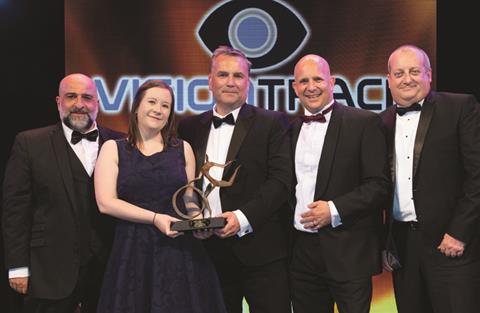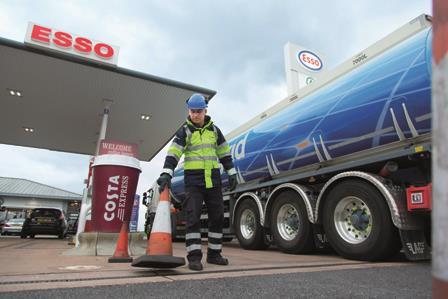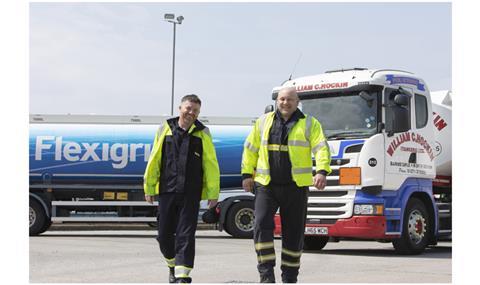
UK fuel distributor Greenergy Flexigrid broke the mould when it brought its haulage operation in-house and established a new ownership model for drivers. It also drove the company’s award-winning approach to safety.
Taking the decision to bring your transport operation in-house is never an easy one and there are compelling reasons not to do it.
But in 2012 wholesale fuels supplier Greenergy had a vision to in-source its haulage work in order to achieve greater visibility of its haulage operations, improve operational performance and better control its customers’ experience. The move also led to it winning the Safety in Operation Award at the Motor Transport Awards 2019.
Adam Franklin, CEO of Greenergy’s transport division Flexigrid, says: “The start of our journey was Greenergy taking the strategic decision to take control of its own distribution.
“It was clearly a big step change to choose to move into that space, but Greenergy is always prepared to make bold decisions.”
Today, Greenergy Flexigrid runs a fleet of 133 tankers, but having this control was just one step in an overarching strategy to change the way employees thought about the company and make them invested in how it is run.
An ownership model was established that gives drivers a 25% stake in the business, creating a collaborative partnership that Franklin says encourages everyone working in the business to be open and honest with the senior management team.
“Giving drivers a real stake in the business means they have a level of identity with it,” he explains. “The success of the business is their success too. We encourage an open dialogue between our drivers and the management team. We want drivers to feel they will be listened to and that the business will work with them proactively.”
Franklin adds: “When people make mistakes, we accept that – we are all human beings, after all. But with the right culture and support, people feel comfortable in bringing things out in the open, so we can all learn from that information and improve our performance.”
Improvements
The safety improvements detailed by the company in its awards submission certainly impressed the judges.
Since 2016, its reportable incident rate (RIDDOR) fell from 1.5 to 0.6 per 100,000 hours worked, with time lost through injuries plummeting by 75%.

Hazard observations are cited as a critical measure of its safety culture – Franklin says this could be reporting a near-miss, or a driver seeing something while at a customer’s site or on a piece of equipment; something that isn’t yet broken or defective – but soon could be.
“It’s at the bottom of the safety triangle,” he says. “It’s not safety critical and wouldn’t stop a job, but it’s something that we do need to put right. For example, a safety marker on a diesel tank that has been damaged.”
But it’s what happens next that’s key to improving safety. “The culture underpinning that is really important,” he continues. “If you have people reporting things and nothing happens, then they will just eventually give up.”
“As a result, I ensure everyone has my mobile number, to show them they have my support if they believe safety is being compromised.
“I get more emails than phone calls, but it’s about knowing it’s there. It’s an important message: we are placing our trust in you. If you think something isn’t right, get in touch with me and we will make it right.
“It works the other way too, so I will call someone about accidents, incidents or issues, but also to recognise the positives, thanking people for great performance.”
Greenergy’s culture of open and honest reporting is augmented through a host of meetings, briefings and bulletins.
Every incident, no matter how small, is emailed across the entire Greenergy management team and safety performance data is compiled into reports, which are then discussed and shared during weekly senior management team meetings.
“We will pick out events and near-misses and discuss them, so they are not being dealt with in isolation,” says Franklin. “We try to make sure everyone in the chain is benefiting from those learnings, and that there’s no part of the system we haven’t thought about and haven’t worked through.
“For example, if there’s an injury or an accident, we will be thinking: how does this resonate across the business? Do we have parallels? Does anyone have a view on this? Have you tried doing x, y or z?”
‘Lesson Learned’ briefs and monthly safety bulletins are provided to all staff too: “We explain simply what has happened and what we all need to do about it.
“Anybody can digest safety information if it’s provided in a manageable way. We make it simple to digest and meaningful.”
One example of safety improvements achieved through open communication between management and drivers is delivery contaminations – basically, delivering the wrong product into the receiving storage tank.

Franklin insists Greenergy does not set targets; it simply asks whether a situation is getting better or worse and when it became apparent that the contamination frequency was not going in the right direction, the issue was discussed with drivers.
The answer? Implementing a minimum 50-minute dwell time.
“What was driving this was a combination of factors, but usually it’s people rushing a bit, taking their eye off the ball and not following a process that’s there to ensure they don’t make a mistake,” Franklin explains. “Now we have a minimum dwell time on each delivery, which we police, so drivers are not rushing off to beat their times. We encourage them to take their time, use their time on site wisely and not place themselves under pressure.”
Contaminations
As a result of this simple strategy, the average rate of contaminations has fallen from one per 16,000 deliveries in 2016 to one in 45,000 by the end of 2018.
Drivers are audited and assessed to ensure the minimum time is achieved and retraining and coaching is provided as necessary.
Risk assessments are also an important part of Greenergy Flexigrid’s safety culture. The company says it has made a significant investment in its safety, health, environment and quality (SHEQ) team, which is beyond what might be expected of other companies its size.
For example, no delivery is made to a customer’s site without it being risk assessed first.
“With 2,000 live sites, that’s a big commitment,” he says. “We visit each site to make sure we have all the relevant information and then set it out clearly and succinctly so it’s easily accessible for both schedulers and drivers. Our aim is to ensure they have all the relevant information to make deliveries efficiently and safely.
“And ultimately, customers benefit too; it means you’re less likely to have a frustrating delivery.”
And it’s not just Greenergy’s staff that benefit from all these initiatives, meetings and briefings. Franklin says information is sent out to its subcontractor network too and that there is “an ongoing dialogue” between the company and its contractors: “It’s a work in progress – it always is – but generally we get good, positive engagement, particularly with smaller contractors as it enables them to up their game and improve their capability.
“If you are doing your job safely then you are probably also doing it efficiently and providing a good service at a good cost.”

Easy being green
Greenergy began as a bedroom start-up in 1992 and has grown into an international supplier and distributor of transportation fuels, with fuel supply businesses in the UK, Ireland, Canada, Brazil and the Middle East.
In 2012 it established Greenergy Flexigrid after in-sourcing its haulage operations and it can now provide fuel with distribution, distribution alone, or a combination of both to its customers in retail and commercial sectors.
Its fleet is branded partly in Flexigrid livery, partly in Greenergy livery and partly in customer livery, enabling it to separate service provision from fuel supply.
This year it bought Barnstaple-based William C Hockin (Tankers), which it said was part of wider plans to grow its long-distance operations.
A tidy result
A truly innovative but very simple approach to driving down the number of accidents was the introduction of Greenergy’s ‘Park Scruffy’ campaign.
In 2017, the company identified that more than 50% of slow-speed manoeuvring (SSM) accidents occurred while a fleet vehicle was reversing.
Park Scruffy encourages tanker drivers not to correct any parking that’s perceived to be imperfect, for one simple reason: “You introduce risk!” explains Franklin.
“Customer sites and retail sites are often busy with members of the public,” he says. “The level of traffic at these places is much higher than 10 years ago.
“We know that 80% of our non-on-road accidents are due to reversing, so anything that introduces reversing introduces risk.”
Encouraging drivers to accept their vehicle may not be lined up flawlessly, as well as the fitment of tail-guard reversing sensor systems, resulted in an impressive 42% reduction in SSMs in 2018.
The next step, Franklin says, is the introduction of 360-degree camera systems on the company’s fleet.











